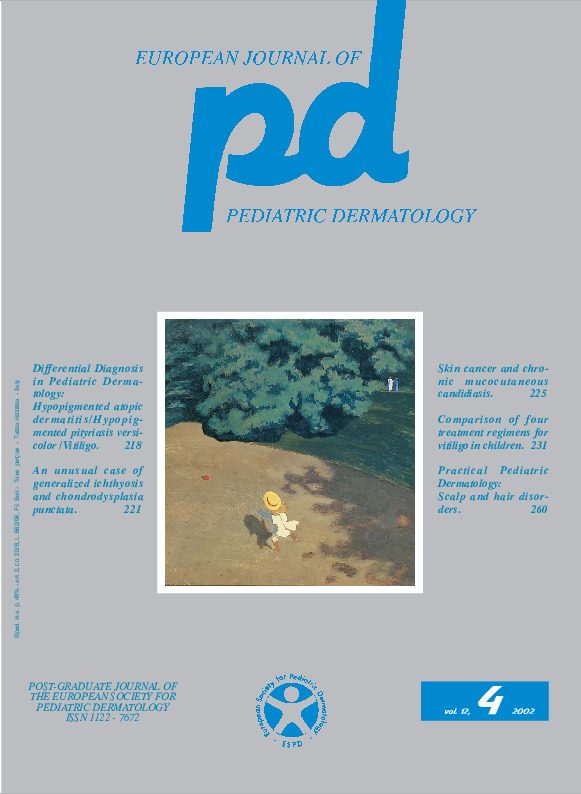Comparison of four treatment regimens for vitiligo in children.
Downloads
How to Cite
Uksal U., Borlu M., Atasavun C., Ferahbas A. 2002. Comparison of four treatment regimens for vitiligo in children. Eur. J. Pediat. Dermatol. 12 (4):231-4.
pp. 231-4
Abstract
It is believed that none of the partially effective treatments are appropriate for children with vitiligo. Initial steps are sunscreens and cover-up, and next, topical corticosteroids, topical or oral psoralens, calcipotriol and/UVR, narrow-band UVB. We clinically evaluated 34 children with vitiligo, -20F, 14M, whose age ranged between 4 and 16-, and examined the association with other autoimmune diseases. Results of four treatment methods - topical bethamethasone, topical calcipotriol, topical psoralen plus sun exposure and narrow- band UVB therapies- were compared. Family history of vitiligo was present in 12 patients (35%). Ten patients had focal, 11 patients segmental and 13 patients generalized type vitiligo. Poliosis, halo nevi, atopic dermatitis and diabetes mellitus type-I were associated diseases. Topical agents were used in focal and segmental vitiligo; generalized cases were treated with narrow-band UVB. Topical bethamethasone group showed repigmentation in 3/11 (27%) cases, calcipotriol group showed repigmentation in 1/10 (10%) cases. There was no satisfactory response in topical psoralen plus sunbath group. Narrow band UVB group showed follicular repigmentation in 7/13 (53%) cases without any side effect at the end of three months.Keywords
vitiligo, Narrow band UVB

